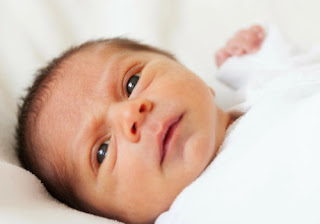11 Noticeable Symptoms of Baby Boy During Pregnancy

What are the symptoms of baby boy in pregnancy? when a woman gets pregnant, she has to follow various advice given by her family members and old wives. One of the most curious points is the gender of the baby and the full family discussion based on it.
Whether you want a girl or a boy you may hear from many about myths, predictions, and indications about the gender of your baby.
When you conceive, it takes 11 weeks to develop a baby’s sex organ. Some early pregnancy symptoms are the same in 70% to 80% women and signs depend differently and based on health conditions, environment, and conditions.
In this Article
Genuine Symptoms of Baby Boy During Pregnancy

1. Morning Sickness:
Every new mom knows this fact that morning sickness is the prior symptom of pregnancy and most of the women feel this during pregnancy.
According to myths, if you are having a boy you feel less morning sickness and feel smoothness during morning cramps. And if you carrying a baby girl you may feel a high level of morning sickness due to high hormonal ups and downs.
Fact:
Morning sickness varies woman to woman and scientifically it never reveals about baby’s gender. There is no proof or evidence that has been found related to morning sickness and s*x of a baby.
2. Heartbeat:
Many people claim if you take a look at the heartbeat of your baby under 140/minute you may be pregnant with a boy and if a heartbeat is more than 140 it is a girl.
Fact:
There is no such evidence found in the researchers that claim this reality. During the first trimester, the heartbeat can’t decide the baby’s gender.
The heart rate between 120 to 160bpm is a normal recorded rate in the fetal.
3. Skin and Hair type:
According to myth, carrying a baby girl can steal mother’s beauty and women may get pimples, pigmentation, and dull skin tone and if you are having a baby body your skin becomes smooth, flawless so as the hairs become lustrous and shiny and strong.
Fact:
There are no clues have been found related to this and this symptom also varies differently to every woman. The instant changes in hormones can lead to these changes.
ALSO READ: 5 Best Healthy Fruit Juice in Pregnancy
4. Particular Food Cravings:
If you love to eat salty and spicy foods you are pregnant with a baby boy and the opposite of that, craving sweet items indicates about baby girl.
Fact:
The studies never agree about this myth due to the medical conditions, malnutrition, and hormonal level is responsible for what you like to eat or not. Food cravings are not the sign of what you are having inside the womb.
5. Mood Swings:
You may feel fewer mood changes if you are going to birth a baby boy and a baby girl can make you have early and constant mood swings.
Fact:
Mood swings are quite common during pregnancy and not related to the baby’s gender and no study or research supports this myth.
6. Tummy Condition:
Having a low tummy is the sign you are carrying a baby body and high tummy positioning indicates baby girl.
Fact:
The tummy position never declares about the gender of the baby. According to researchers, carrying high or low and the changes in tummy position depends on the size of the uterus and weight of your baby.
7. Breast Size:
Myths are myths, weird or not. If you are pregnant with a boy your right breast would be bigger than your left breast.
Fact:
There is no proof that has been found anywhere that states about breast changes are linked with baby’s gender. As the breasts are getting ready for feeding so you may feel swelling and due to fast blood circulation, the breasts feel bigger.
ALSO READ: 10 Tips to Prevent The Risk of Breast Cancer
8. Color of Urine:
If the color of urine is dark you are carrying a baby boy.
Fact:
Due to nausea and vomiting, you can face dehydration that is a major cause of dark urine and it is very common. The color of urine never indicates the gender of a fetus.
9. Weight Gain:
When you are pregnant and having excess weight gain around the stomach area you must know it is a girl and when the stomach looks tiny less-weighted it would be boy.
Fact:
Weight gain never determines the s*x of a baby and it is quite normal.
9. Ice-cold feet:
If you are having ice-cold feet especially while sleeping it indicates about the baby body has been developing in the womb.
Fact:
Ice-cold feet is not the sign of the gender of the baby and weather, poor blood flow, sugar level, are also cause cold feet.
10. Walking Position:
Whenever you walk or get up and putting the right leg first to take a step you are pregnant with a baby body.
Fact:
No, scientifically data states about this fact and each woman has a different walking position.
ALSO READ: 10 Warning Signs and Symptoms of Iron Deficiency Anemia
Early Baby Gender Prediction Test
Ultrasound:
Ultrasound is a popular way to detect the baby’s health and position. The ultrasound done between 18 to 20 weeks can announce the gender of a baby.
Sometimes due to improper posture of your baby, the s*x can’t be detected properly so you have to repeat the scan for 100% assurance.
DNA Blood Tests:
As we know the mother’s blood has the DNA traces of her baby and via this test, the s*x can be easily announced whether you are carrying a girl or a boy.
But this test can\t be performed easily and done on 35+ aged women for testing genetic conditions or other issues.
Genetic Testing:
This test performed especially for those couples who have past genetic disorders history. The test contains CVS chronic villi sampling that can be done after 11th weeks and amniocentesis that can be performed after 15th weeks.
Genetic testing has the risk of miscarriage and in rare cases, it has been performed.
You might be interested in: Side Effects of Baby Diapers
Conclusion:
Many other popular tricks and games are available that can state about baby’s gender but they are just for fun and entertainment.
We hope you would like the noticeable symptoms of baby boy during pregnancy and enjoy it but don’t take the myths seriously because only science and genuine testing are required for knowing the s*x of your baby.
References
- Maternal Intuition of Fetal Gender – NCBI
- Home test shows sex of fetus at five weeks of pregnancy – Nlm.nih.gov
- During Pregnancy: Prenatal Testing– https://www.cdc.gov/





